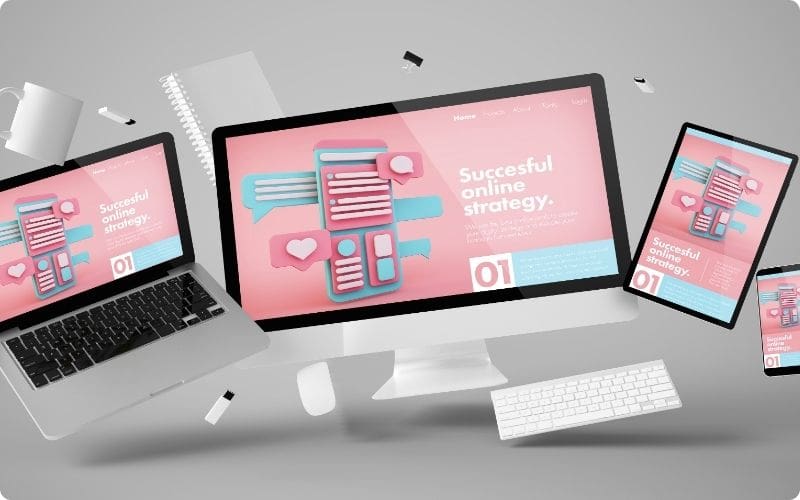Navigating a complicated website can be a frustrating experience for visitors. When users encounter overly complex designs, they often find it difficult to locate the information they need. This confusion can lead to high bounce rates as visitors abandon your site in search of a more user-friendly alternative. A complicated design can make it hard for users to engage with your content, resulting in lost opportunities for conversions and sales.
Several factors contribute to making website designs overly complex. These can include cluttered layouts, an excess of visual elements, and poorly organised navigation structures. Each of these issues can overwhelm users, making it difficult for them to focus on their primary task. When a website is too busy or confusing, it detracts from the overall user experience, leaving visitors frustrated and unlikely to return.
A complex website design doesn't just impact user satisfaction. It can also negatively affect your business's credibility. When users struggle to navigate your site, they may perceive your business as unprofessional or unreliable. Simplifying your website design can alleviate these pain points, making it easier for users to find what they need and fostering a more positive perception of your brand. In this article, we'll explore the common issues associated with complicated website designs, the negative effects they bring, and how professional services can simplify your website for improved performance.
Common Issues with Complicated Website Designs
Complicated website designs can arise from several elements that make user navigation a challenge. One common issue is cluttered layouts. When a website contains too many elements, such as images, buttons, and text blocks, it can create visual chaos. Users may find it difficult to focus on important information, leading to a frustrating browsing experience.
Another factor contributing to complexity is the overuse of animations and interactive features. While these elements can enhance a site’s appeal, excessive use can slow down loading times and distract users. Too many moving parts can also make it hard for visitors to complete tasks, such as finding contact information or making a purchase.
Poorly organised navigation structures further complicate website designs. When menus are overloaded with options or not intuitively arranged, users might struggle to find what they’re looking for. Effective navigation should guide the user effortlessly to their desired destination. Overly complex navigation does the opposite, causing confusion and frustration.
These complexities negatively impact user experience and site navigation. When visitors can’t quickly find the information they need, they’re more likely to abandon the site. This loss of potential customers can severely affect business performance, making it crucial to address these issues.
The Negative Effects of Overly Complicated Designs
Complex website designs lead to various negative effects on user engagement and overall site usability. One significant consequence is elevated bounce rates. When users land on a cluttered, difficult-to-navigate site, they often leave almost instantly. This high bounce rate indicates that the site fails to engage visitors, reducing the chances of converting them into customers.
Moreover, complicated designs can drastically lower user engagement. Visitors are less likely to explore and interact with a confusing website. This can lead to fewer page views, less time spent on the site, and ultimately, lower conversion rates. Engaged users are more likely to explore your products or services, and a complex design hinders this engagement.
In addition to affecting user behaviour, overly complicated designs can harm your business credibility. A website that is hard to use gives the impression of disorganisation and lack of professionalism. Users may question the reliability and quality of your business based on their frustrating interaction with your site.
Finally, such designs can erode customer trust. Visitors who struggle to navigate your site may doubt your business’s ability to deliver a smooth and efficient service. This mistrust can result in lost business opportunities and a damaged brand reputation.
Addressing these negative effects is essential for maintaining a user-friendly and credible online presence. Simplifying your website design can significantly improve user engagement, build trust, and enhance overall usability.
Challenges in Simplifying Website Design
Simplifying website design comes with its own set of challenges that many businesses struggle to overcome. One significant obstacle is balancing aesthetics with functionality. While a clean, simple design is user-friendly, businesses often want their websites to stand out visually. Achieving this balance without compromising usability can be difficult.
Another challenge is maintaining brand identity. Simplifying a website shouldn’t mean stripping away the elements that convey your brand’s message and values. Businesses may find it hard to pare down their designs while keeping essential branding elements intact. This requires a careful, strategic approach to ensure that the website remains engaging and informative.
Technical limitations also pose a challenge. Reducing page load times, optimising images, and ensuring mobile responsiveness are complex tasks that require in-depth technical knowledge. Many businesses lack the specialised skills needed to implement these changes effectively, making the simplification process more daunting.
Businesses also have to deal with legacy issues. Older websites often carry outdated code and obsolete design elements that are hard to update. Integrating new, simplified designs into these existing frameworks can be a time-consuming and resource-intensive process.
These challenges highlight the need for expert intervention. Simplifying a website requires a combination of design expertise, technical skills, and strategic planning. Professionals equipped with these capabilities can address these challenges effectively, transforming complex websites into streamlined, user-friendly platforms.
How Professional Services Can Simplify Your Website Design
Professional web design services offer targeted solutions to simplify your website design. One of the key improvements they provide is intuitive navigation. Experts can reorganise your site’s layout and menu structure to ensure that users can easily find what they’re looking for. Clear, logical navigation paths make the user journey more straightforward and enjoyable.
Another crucial service is visual decluttering. Professionals can identify and remove unnecessary elements that contribute to a chaotic layout. By focusing on what truly matters, they can create a clean and engaging design that enhances user experience. This includes optimising images and reducing the use of excessive animations or interactive features that slow down the site.
Code optimisation is another significant benefit of hiring professionals. By refining and simplifying the website’s code, experts can improve loading times and overall site performance. This ensures that your website is both fast and efficient, providing a smoother user experience.
Moreover, professional services can integrate responsive design principles. This means your website will function seamlessly across various devices, from desktops to smartphones. A responsive design enhances accessibility and usability, catering to a broader audience.
Hiring experts to simplify your website results in multiple benefits. It leads to lower bounce rates, enhanced engagement, and improved user satisfaction. Furthermore, a streamlined design boosts your business’s credibility and fosters customer trust. Here’s how we can help.
Conclusion
A complicated website design can deter users and damage your business's online presence. From cluttered layouts and disorganised navigation to excessive visual elements, these complexities create a frustrating user experience. High bounce rates, low engagement, and diminished trust are some of the negative effects that can harm your business’s credibility.
Simplifying your website design is essential, but it comes with challenges. Balancing aesthetics and functionality, maintaining brand identity, and dealing with technical limitations require specialised skills. These obstacles highlight the need for professional intervention to create a streamlined, user-friendly website.
Professional web design services can address these challenges effectively. They offer solutions such as intuitive navigation, visual decluttering, and code optimisation. With their expertise, your website can become a fast, efficient, and engaging platform that enhances user experience and supports your business goals.
Struggling with a complicated website design? Contact Webnua today for web design services.









